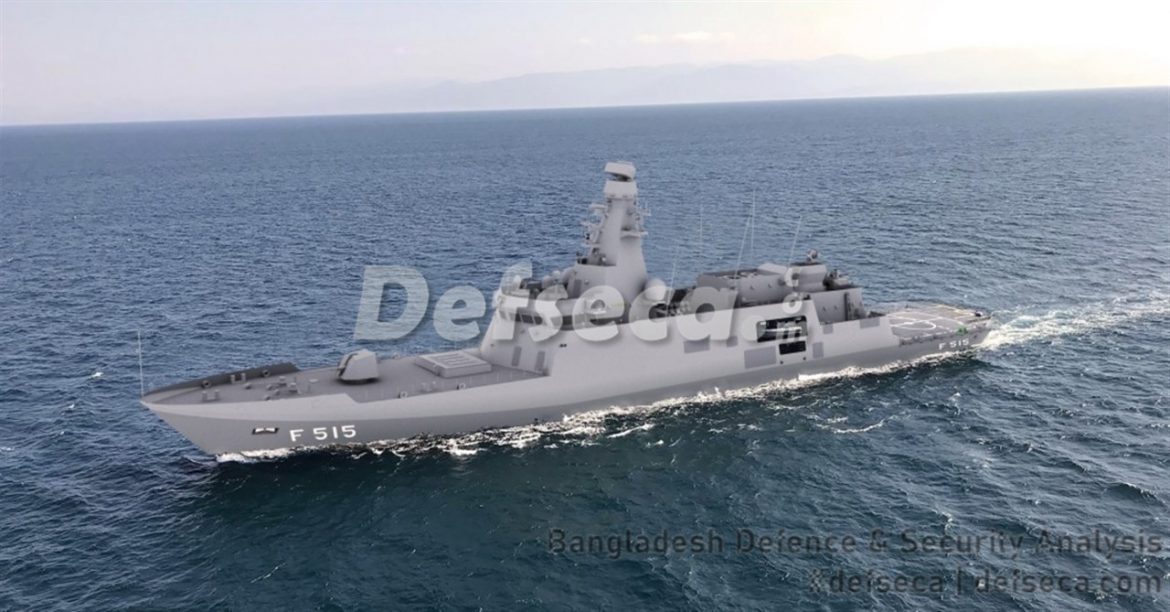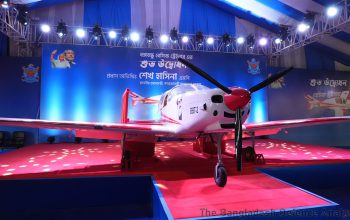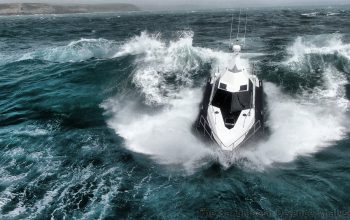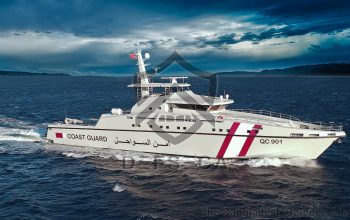The Bangladesh Navy stepped forward closer to finalising the impending guided missile frigate program, which entails construction of multi-role capable guided missile frigates in Bangladesh at the Chattogram Dry Dock Ltd (CDDL) with technical cooperation of an experienced foreign naval shipbuilder.
Companies from the United Kingdom, France, Italy, China, India, South Korea and the Netherlands initially showed interest in the project.
The Bangladesh Navy evaluated the offers from the respective shipyards of those nations but shortlisted offers from the Netherlands, China and Italy as competent in completing the large shipbuilding project estimated to cost over $2.5 billion.
Under the proposal China Shipbuilding & Offshore International Co., Ltd. (CSOC) wanted to take a majority ownership of the Bangladesh Navy-owned CDDL and in return would build the Type 054 guided missile frigate in Bangladesh at a cost of $378 million per unit. This was declined by the concerned authorities as neither the takeover offer for the shipyard, nor the cost per unit of the frigates were acceptable.
The Netherlands offer involved the Damen Group developing CDDL and building the frigates locally however there were shortcomings in the capability of their frigate design, which were comparable to contemporary light frigates or corvettes such as the Shadhinata class that are already in service with the Bangladesh Navy. Thus, the Navy would not find benefit in awarding such a contract to the Dutch shipbuilder.
Italy’s Fincantieri’s multipurpose frigate design, down-scaled version of their FFG (X) offered to the US Navy attracted significant attention from the Bangladesh Navy, however the cost of the program would be beyond the scope of the allocated budget.
Therefore, Turkey’s STM is likely to be the front runner of the Bangladesh Navy’s frigate program with addition of weapons and sensors supplied by sub-contractors such as Thales, MBDA, Aselsan, Roketsan and Leonardo, as necessary.
The Turkish frigate is a 3,000 tonne displacement modern multi-role guided missile frigate with capability to conduct conventional naval surface, anti-air, anti-submarine and electronic warfare using an array of modern sensors and armaments. It can be used to conduct operations including surveillance, maritime patrolling, inspection and anti-piracy operations also.
The 113.2 m guided missile frigate has a draught of 4.05 m and a maximum speed of over 29 knots. It has an endurance of 5,700 nautical miles at 14 knots and is equipped with CODAG propulsion having two shafts and CPP propellers. Four diesel generators provide onboard electrical power to operate its vast array of sensors, amenities and armaments.
The missile frigate is equipped to carry two helicopters, including one in hanger, one on the aviation deck simultaneously.
Two RHIBs provide boarding parties with capability for carrying out inspection duties on the high seas and accommodation is provided for the crew of 123 in this highly automated frigate.
The Bangladesh Navy will specify what weapons it requires though this will generally include a 76mm main gun supplied by Leonardo, 35 mm Aselsan Gökdeniz dual barreled CIWS (Close-in Weapon System), two 25 mm Aselsan STOP automatic cannons, 16 ATMACA Vertical launching system anti-ship cruise missile, 16-cell (total 64 missiles) MDAS Vertical Launching System able to fire the HISAR Surface-to-air missile.
A contract will have to be signed between the Governments of Bangladesh and Turkey, in which Chattogram Shipyard will partner with Istanbul Shipyard or STM to supply the six guided missile frigates to the Bangladesh Navy as per their technical and financial requirements.
Generally 30% of the cost of a frigate goes towards electronics, 25% dedicated towards weapons, 22% towards labour and 13% towards hull and equipment, and 10% towards propulsion and miscellaneous costs.
The Bangladesh Navy might need to increase the budget of its frigate program owing to drawn out delivery timeline and the need to manufacture at least three to four units at its own facilities in Chattogram. Defseca.com estimates the final cost to be no less than $3 billion once the warships are all delivered by 2030. The Defence Minister of Bangladesh (also the Prime Minister concurrently) will finalise the decision on the program shortly.




